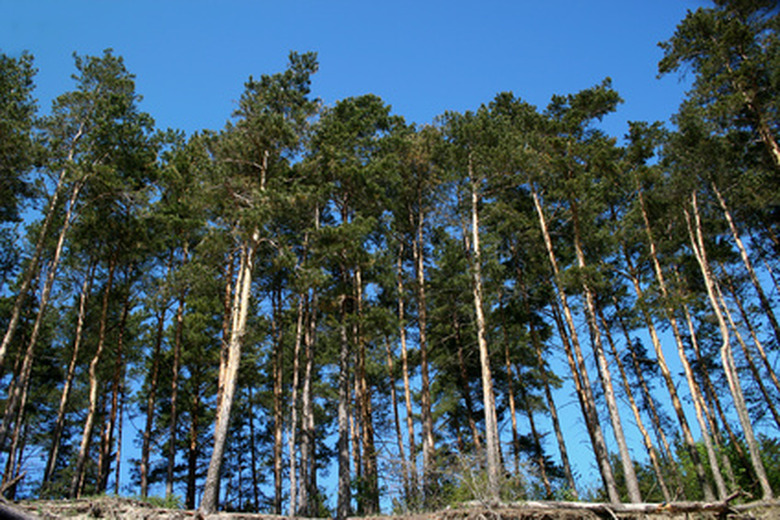The Flammability Of Pine Trees
Pine trees are a highly flammable species of tree when dry. However, a freshly cut or still growing pine tree can resist combustion for a great amount of time, depending on the intensity of the fire and whether or not it is intentionally set. The startling propensity for pine trees to ignite should be recognized by the many people who use pine trees as holiday trees indoors.
Factors
A study conducted by the Firewise group in Maryland determined many factors that can increase the flammability of plants. Pine trees have nearly every characteristic that will increase the flammability of plants. They are resinous, shed needles, have low-hanging branches and dense foliage and can retain dried needles. Together these factors make pine trees extremely flammable.
Statistics
According to the National Fire Protection Association, almost 600 fires each year in the United States are caused by the ignition of Christmas (pine) trees. Over 500 of these yearly fires occur indoors, which result in an average of 33 deaths per year and over 100 injuries per year. Furthermore, the yearly fires lead to over $21 million in direct property damages. These numbers have dropped greatly over the years. Almost twice as many such fires occurred in the 1960s.
Fire Retardants
The Forest Products Laboratory conducts many tests to improve the safety of using pine trees as in-home decorations. Among these are tests to improve the fire retardation of the trees. It was thought that adding fire retardant chemicals to the water for the trees would improve their resistance, but the FPL proved otherwise. The FPL states that placing a tree in plain water is far more beneficial than using chemical additives.
Pine Trees and Room Fires
A pine tree that is left to naturally dry, by placing it in a stand with little to no water, can burn sporadically and not provide a significant amount of heat, whereas trees that have been artificially dried or excessively dried, through dry heat and heat lamps, create 10 to 20 times the heat and burn six to 10 times quicker. The dried trees release enough energy to cause a room fire, whereas the naturally dried tree would need another fuel source, such as paper, to ignite the room.
Pine Trees in Standing Water
Pine trees that were cut and allowed to stand in water, receiving adequate water to the foliage, could not be ignited by a match, according to studies done by the Department of Forestry-Canada. In the same group of studies, it was determined that allowing a tree to drop 50 to 85 percent in moisture content would allow the tree to be easily ignitable with a match and that allowing the tree to drop below 50 percent moisture content would make the tree an extreme hazard.
